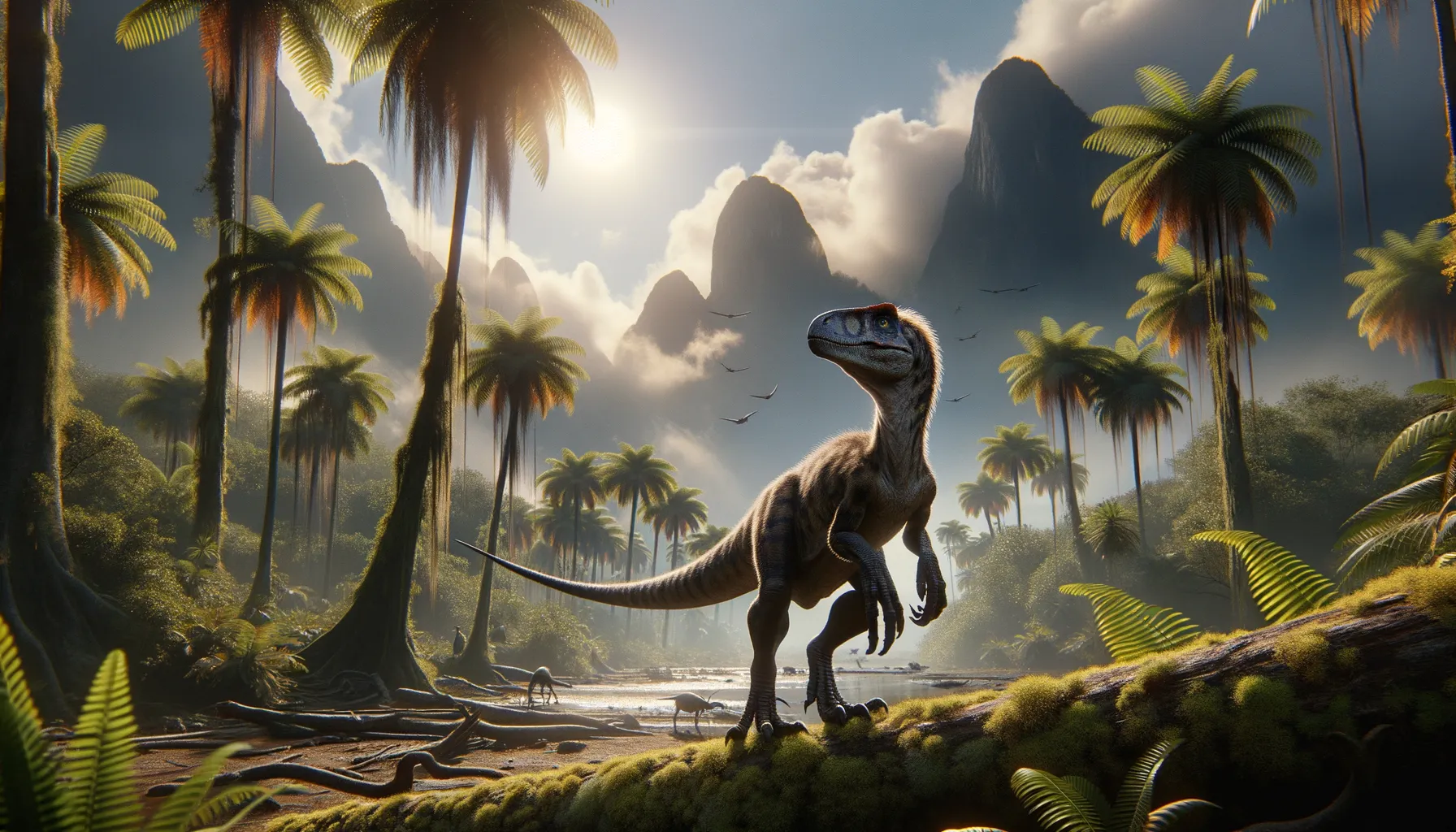
Tachiraptor
A swift predator with ancient roots.
Period
Jurassic
Length
Around 2 meters from head to tail.
Height
Approximately 1 meter tall at the hips.
Weight
Estimated to be around 40 kilograms.
Tachiraptor was a small, agile theropod dinosaur that lived during the Early Jurassic period, around 200 million years ago. It was likely a predator, using its speed and light weight to chase down prey. Discovered in Venezuela, it provides important insights into the theropod lineage and their early distribution throughout what is now South America.
Diet
Tachiraptor was carnivorous. It likely hunted small vertebrates and possibly scavenged when the opportunity arose.
Hunting
Tachiraptor probably relied on stealth and speed to catch its prey. Its lightweight and agile nature suggest it could rapidly strike at opportune moments.
Environmental challenges
During the Early Jurassic, Tachiraptor faced volatile climatic fluctuations. These included changes in temperature and aridity that affected available resources. Competition for limited food sources with other predators could also have been a challenge, influencing its adaptability and survival strategies.
Speed
Moderate; estimated to be a swift runner.
Lifespan
Likely a short lifespan, typical for small theropods.
First discovery
Discovered in the Andes of Venezuela in 2013.
Fun Facts
- Tachiraptor is a relatively newly discovered dinosaur, having been officially named in 2014.
- This dinosaur lived during the Early Jurassic period, around 200 million years ago.
- Its name, Tachiraptor, means 'Tachira thief,' named after the Tachira state in Venezuela where it was discovered.
- Tachiraptor was a small theropod, meaning it was a bipedal carnivorous dinosaur with sharp teeth and claws.
- The discovery of Tachiraptor was significant because it helps fill in gaps about the range and variety of early theropods in South America.
- Tachiraptor is believed to be one of the early ancestors of larger theropods, like the famous Tyrannosaurus rex.
- Due to limited fossil remains, scientists are still learning about Tachiraptor's exact size and behavior.
Growth and Development
As Tachiraptors aged, they likely grew quickly, reaching maturity relatively fast, a common trait among small theropods to ensure survival. Juveniles might have had to fend for themselves early due to limited parental care. Their development was possibly influenced by environmental conditions, impacting growth rates based on food availability.
Habitat
Tachiraptor lived in a landscape that was likely a mix of open areas with patches of forest. This environment provided both hunting grounds and escape routes. Rivers and streams may have supported rich vegetation that sustained prey species.
Interaction with other species
Tachiraptor might have faced competition from other small carnivorous theropods. Its interactions could have included avoiding larger predators and utilizing its speed to outmaneuver threats. Symbiosis with other species, like feeding on leftovers from larger predators, was possible.
Natural lifespan
Tachiraptor may have lived around 10 years.
Reproduction
Tachiraptor most likely laid eggs, likely in nests hidden from predators. Little is known about its specific reproductive behaviors, but like many dinosaurs, it may have engaged in seasonal breeding, ensuring the next generation hatched during favorable conditions.
Social behaviour
Tachiraptor might have been a solitary hunter, although small groups could have formed during certain activities, like following migrating prey. Social behavior would have varied with environmental pressures, possibly working in groups for protection against larger predators.
Fossil locations
Fossils of Tachiraptor have been found near La Grita in Venezuela. The discovery site contributes significantly to our understanding of early theropod evolution in South America. These fossils include partial remains, providing a glimpse into the dinosaur's morphology and potential adaptations.
